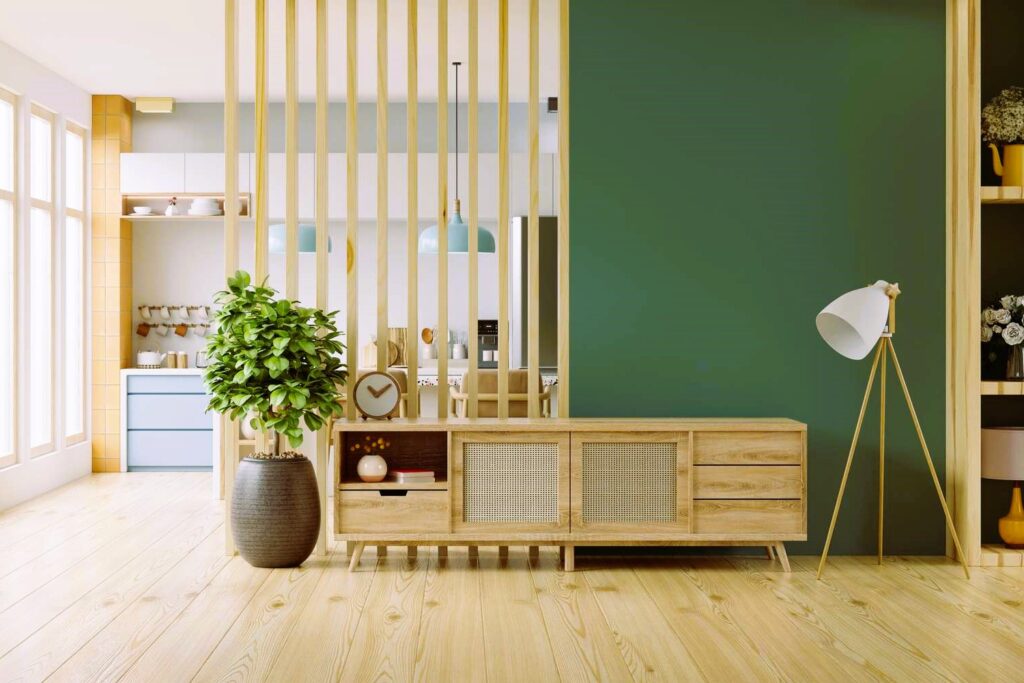In the realm of interior design, space optimization and functionality are key considerations. One element that can significantly impact both of these aspects is the use of interior room dividers. These versatile design elements not only help define spaces within a larger room but also contribute to aesthetics and functionality. In this article, we’ll explore the various options for interior room dividers and how they can be used to enhance your living space.
The Role of Interior Room Dividers
Interior room dividers serve multiple purposes in interior design:
- Space Division: Room dividers create separate zones within a larger room, allowing for better organization and functionality. This is particularly useful in open-concept living spaces.
- Privacy: Dividers provide privacy without the need for full walls, making them ideal for shared spaces, bedrooms, or home offices.
- Aesthetic Enhancement: Room dividers can serve as decorative elements that add visual interest and style to a room.
- Light Control: Certain dividers, like curtains or blinds, can be used to control the amount of natural light entering a space.
Types of Interior Room Dividers

There are numerous options available when it comes to interior room dividers, each with its unique features and advantages. Let’s explore some popular choices:
- Folding Screens:
- Description: Folding screens, also known as room dividers or privacy screens, consist of hinged panels that can be folded in various configurations.
- Advantages: They are highly versatile, portable, and come in various styles, from traditional to modern.
- Sliding Room Dividers:
- Description: These dividers are mounted on a track and can be slid open or closed to partition a space as needed.
- Advantages: Sliding dividers offer flexibility and can be customized with materials like glass or wood for a modern or rustic look. How to completely repaint an old carpet, read more here.
- Curtains or Drapes:
- Description: Hanging curtains or drapes can create a soft, flowing partition between spaces.
- Advantages: They are cost-effective, easy to install, and provide a variety of fabric and color options.
- Shelving Units:
- Description: Bookshelves or storage units can double as room dividers when strategically placed.
- Advantages: They offer additional storage and display space while dividing rooms.
- Bi-Fold Doors:
- Description: Bi-fold doors consist of multiple panels that fold in on themselves when opened.
- Advantages: They provide a seamless transition between spaces when fully opened and can be customized with various materials.
- Glass Partitions:
- Description: Glass partitions allow for the separation of spaces while maintaining a sense of openness and visual connection.
- Advantages: They let in natural light, create a modern look, and can be frosted or tinted for privacy.
Considerations for Choosing Room Dividers

When selecting room dividers for your space, consider the following factors:
- Functionality: Determine how you plan to use the divided spaces and choose a divider that suits those needs.
- Aesthetics: Ensure that the chosen divider complements your interior design style and color scheme.
- Size and Scale: Take accurate measurements of the space to ensure the divider fits seamlessly.
- Maintenance: Consider the maintenance requirements of the chosen divider, especially if it involves materials like glass or fabric.
Canadian Interior Design Standards
To ensure that your choice of room dividers aligns with Canadian interior design standards and regulations, you can refer to resources such as Wikipedia. These sources can provide guidance on specific standards or requirements related to interior room dividers in Canada.
In conclusion, interior room dividers are versatile design elements that can transform the layout, aesthetics, and functionality of your living space. Whether you opt for folding screens, sliding dividers, curtains, or other options, carefully consider your needs and style preferences to select the perfect room divider for your home.
